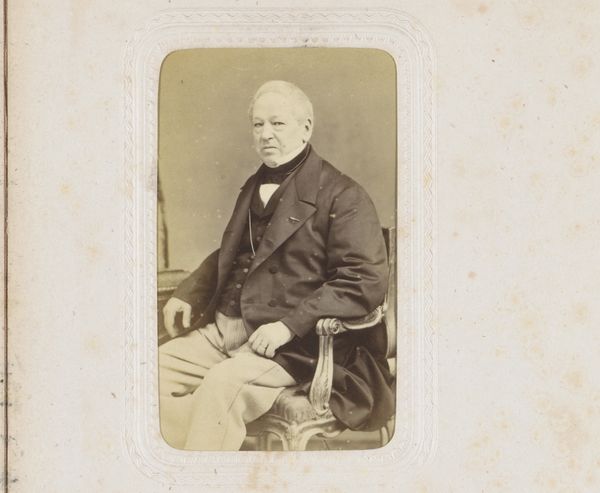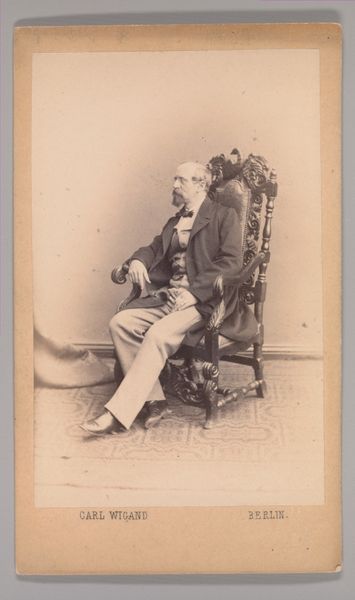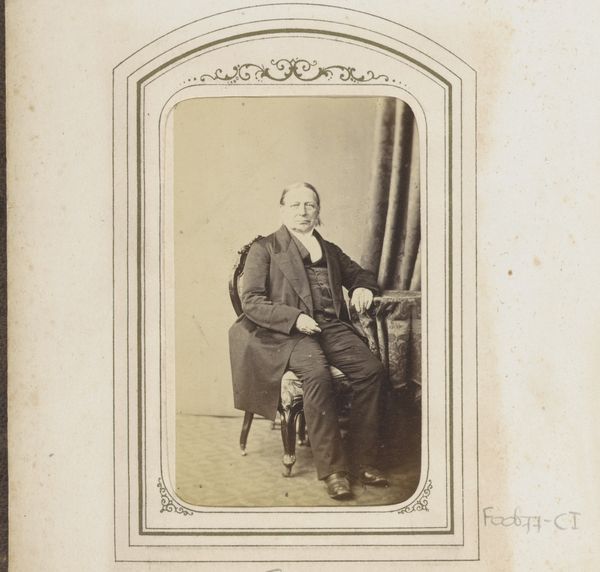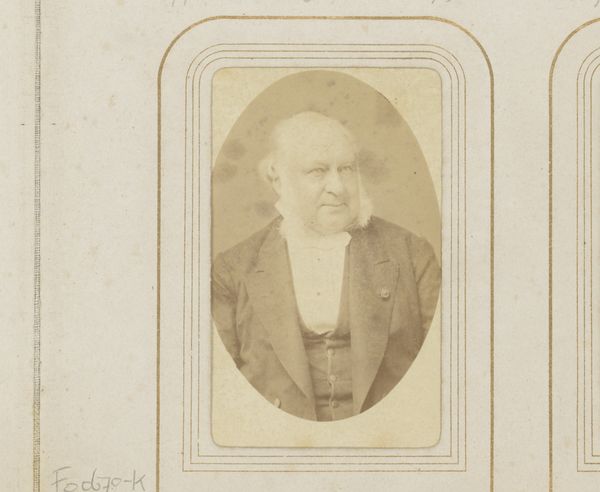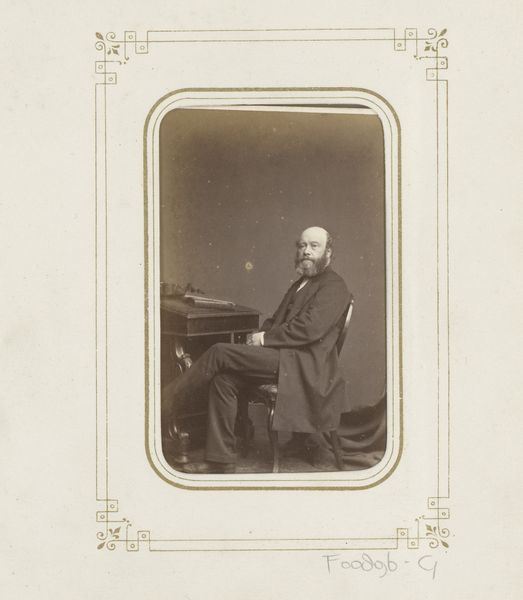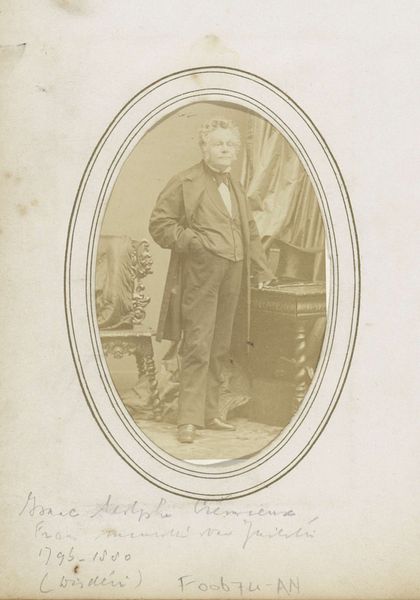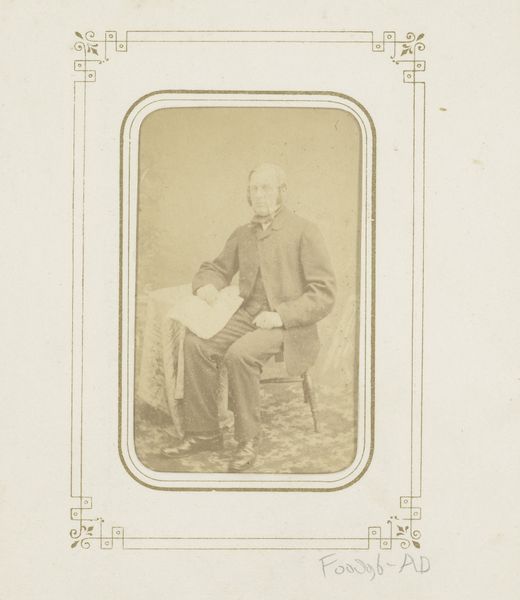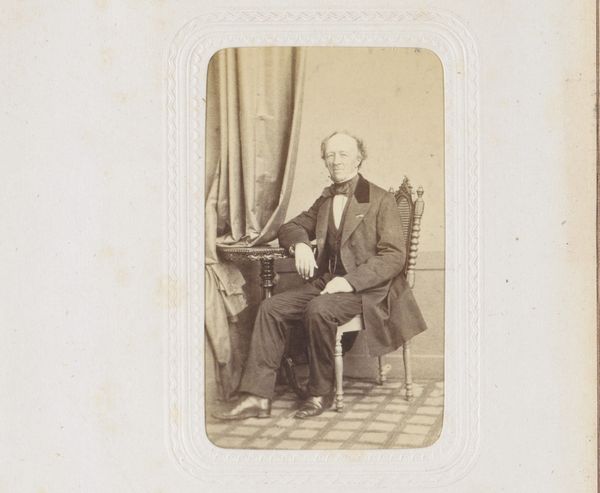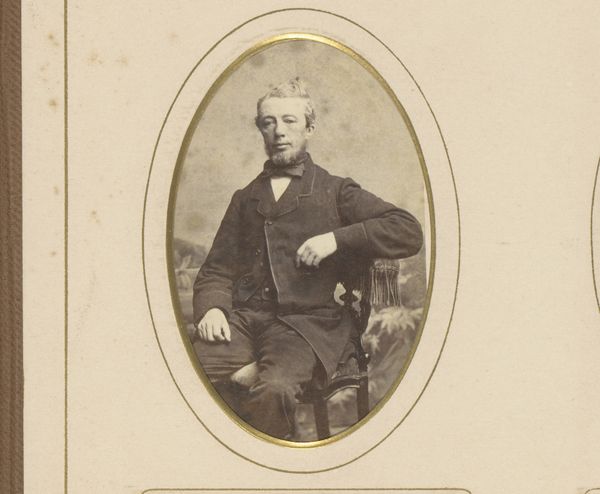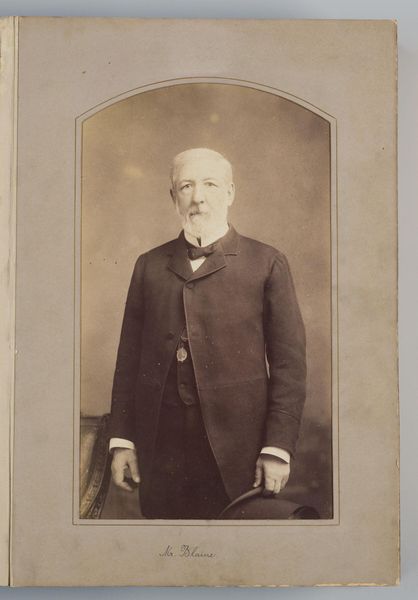
photography
#
portrait
#
photography
#
historical photography
#
19th century
#
genre-painting
Dimensions: height 83 mm, width 52 mm
Copyright: Rijks Museum: Open Domain
Editor: This is "Portret van een zittende man," or "Portrait of a Seated Man," taken between 1872 and 1887. It’s a photograph by Charles Binger, housed at the Rijksmuseum. It strikes me as a very formal and almost…oppressive portrait. What do you see in this piece, especially regarding the sitter's position within 19th-century society? Curator: This photograph is fascinating because it simultaneously reflects and reinforces the power dynamics of the 19th century. The sitter’s formal attire and posed demeanor speak to the era's rigid social structures and expectations of masculinity. Think about who was likely to have their portrait taken then. Who was excluded from this kind of visual representation, and why? Editor: So, it’s more than just a portrait of a man in a suit? Curator: Absolutely. Consider the power inherent in being photographed, in having one’s image preserved and disseminated. The photograph becomes a tool, consciously or unconsciously, for perpetuating social hierarchies. The lack of visual representation of certain groups – women, the working class, people of color – isn't accidental; it is part of a larger system. Editor: That makes a lot of sense. It’s easy to look at old photos without considering who *isn’t* in them. Curator: Precisely. What do you think his pose communicates in relationship to that societal hierarchy? The gaze, the posture? Is it assertive, or something else? Editor: He does seem very composed and self-assured, not necessarily assertive. This feels like a man comfortable in his position. I’m now looking at it as a historical document and also, as you mentioned, a signifier of exclusion and power. Thank you. Curator: My pleasure. Analyzing such works allows us to critically examine the narratives that history often overlooks or actively suppresses.
Comments
No comments
Be the first to comment and join the conversation on the ultimate creative platform.
